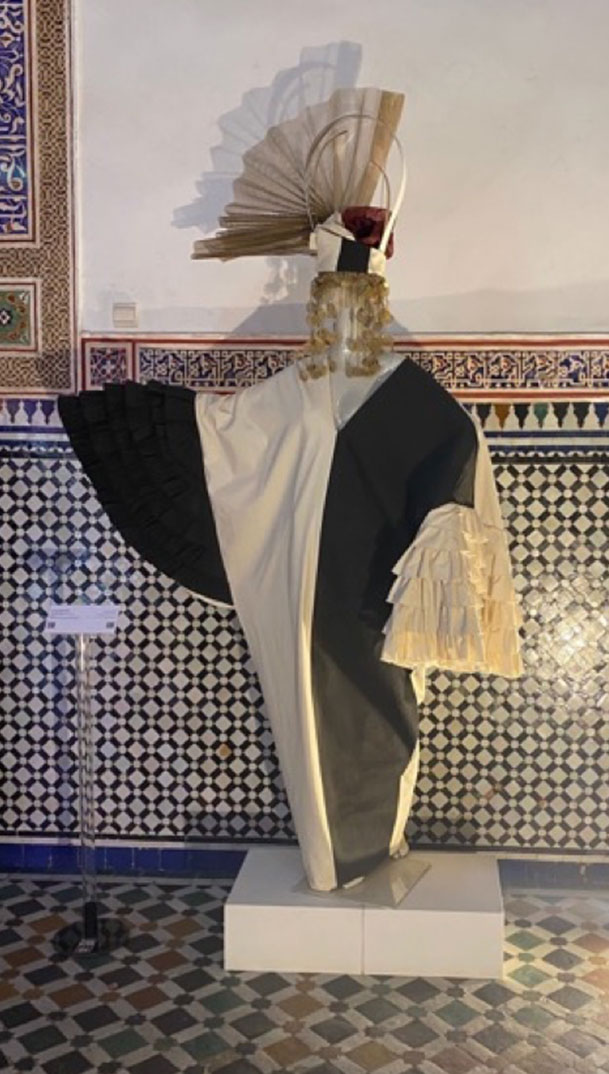FASHION ARTSPORT
AHLAM
LEMSEFFER

THE WORK
Ahlam Lemseffer, born in El Jadida, Morocco, studied Art in Paris. A professor and researcher at the MEN, she is a member of the Honorary Committee of the Francophone Arts Society and holds numerous awards, including the prestigious decoration of the French Academy of Sciences and Letters.
She is one of the most influential artists of her generation. Her work is articulated around mediums such as painting, sculpture and installation. Her research explores forms, spaces and colors, questioning the interdependence between flatness and spatiality… His iconography gives abstract forms the value of representations referring to architecture, the environment and human society. For years, Ahlam has explored the territories of abstract painting through a continuous questioning of the pictorial process: composition, surface, color, light and perspective.
Since the 1980s, his work has found visibility and recognition in numerous private and public collections, in institutions and contemporary art events in Morocco and internationally. He participated in the Fourth International Biennial of Islamic Art in Iran, the Cairo Biennial, the XXIV Biennial of Alexandria and the International Biennial of Contemporary Art in Tunis.
Even before I saw the costume I was going to work on, a question came to me: how to merge, through a contemporary garment that is cradled on both shores of the Mediterranean, traditional Moroccan customs with ancestral Spanish ones.
The costume has always had a social function, set by norms and values. Between Spain and Morocco there has always been an interaction through the flow of people traveling from one shore to the other. This naturally translates into the use of borrowed clothing. Such is the case of the Spanish carbajada, which evokes the Moroccan djellaba with its very long hood that frames the face. We find this type of garment in paintings of popular scenes, such as some of those immortalized by Francisco Goya. The same is true of clothing reminiscent of the Moroccan caftan. Thus, Arab-Andalusian art was created between Spain and Morocco: a shared cultural heritage.
From this observation, I tried to work on the model I received from Manuel Fernandez, integrating details of traditional Moroccan couture (sfifa, aqad, chachiya, capuche). As soon as I saw the suit, in my plastic approach I opted for an asymmetry imposed by the large width of the model. The geometric cut is very beautiful and I wanted to respect it. So I thought of a minimalist work to keep visible the nobility of the fabric.
On the front there are elements reminiscent of the kaftan and on the back, an added fabric evoking the mansouria worn over this garment. The marriage of the Spanish/Moroccan costume is also evident in the headdress. She wanted it to be imposing to oppose the dress and so she wears pendants on both sides that evoke Berber jewelry and lace coming out of the back, like the hats of the old Spanish dresses. Flowers and jewels to represent the festive meeting of the two shores.
In both customs there is a certain modesty that I have tried to reproduce in my work.
TITLE
Mansouriati (2022)
TECHNIQUE
Acrylic paint, natural and wild silk, stifa mrema, chitane, tulle, cottage paper, metal and stencils.
INSPIRATION
Merge the two shores of the Mediterranean.
LINKS

CONTINENTES
- AMÉRICA DEL SUR
- ASIA
- ÁFRICA
- EUROPA
- AMÉRICA DEL NORTE
- OCEANÍA
